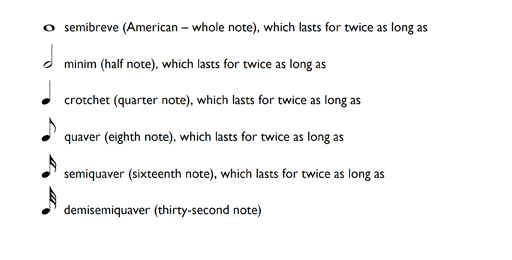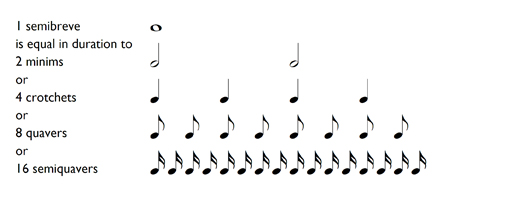3 Rhythm and metre
3.1 Time values
As well as a pitch name, each note has a rhythmic value, called a time value, note value or duration. Those most commonly found in present-day usage are shown in Example 13.
Example 13

Notice that in order to differentiate these symbols for time values:
- all have stems apart from the semibreve
- the note heads of the semibreve and minim are open, whereas those for the shorter values are filled in
- the quaver has a flag (or tail), always drawn on the right-hand side of the stem, the semiquaver has two flags and the demisemiquaver, three.
You will probably have noticed too that the duration of each time value is half that of the one above. Therefore two minims last the same duration as a semibreve; two crotchets last the same duration as a minim; and so on. This also means that four crotchets last the same duration as a semibreve, as do eight quavers or sixteen semiquavers. Example 14 maps out these relationships:
Example 14

